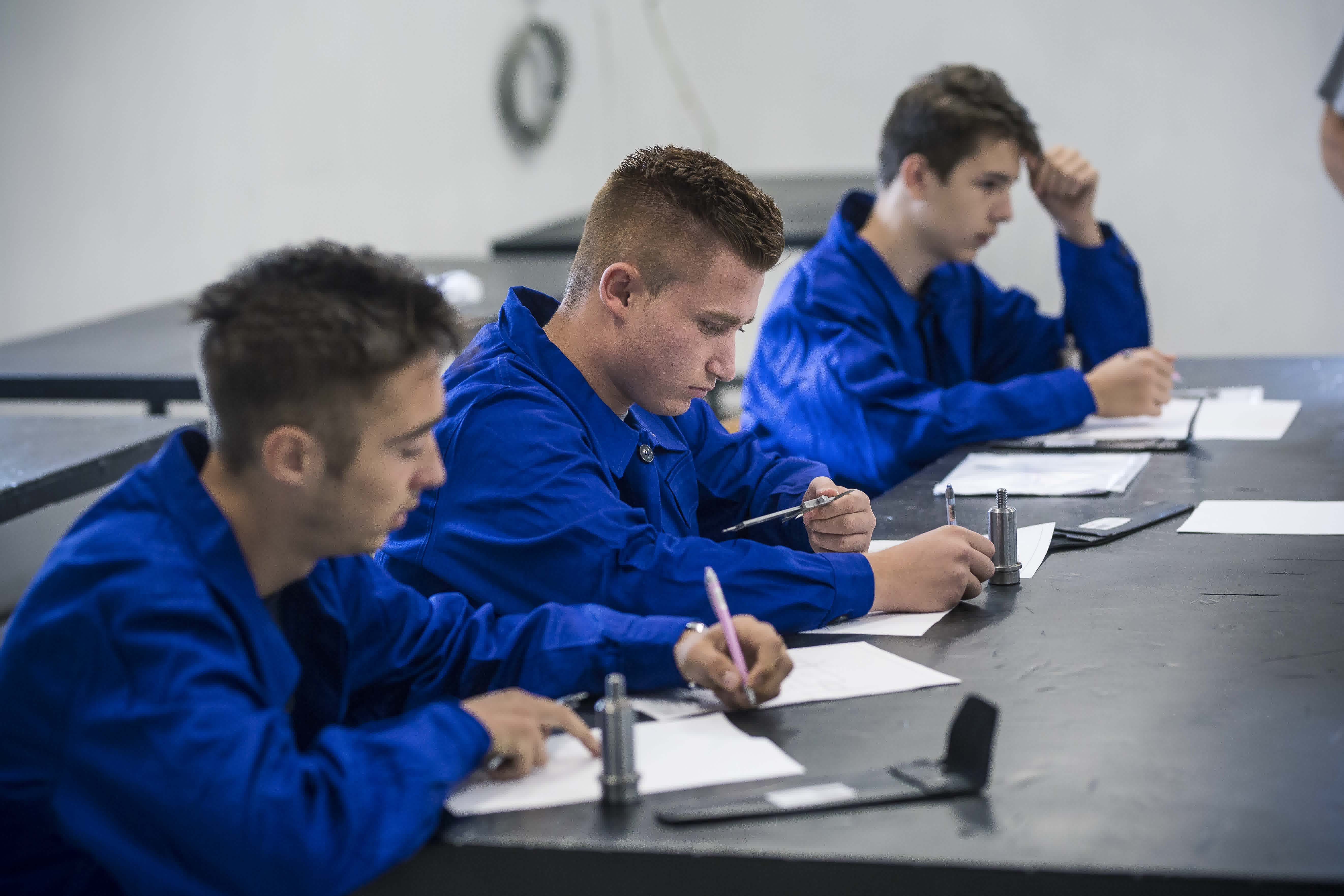Az utánpótlásban elkötelezett középvállalatoknak jó lehetőség a szakképzés új rendszere
Az utánpótlásban elkötelezett középvállalatoknak jó lehetőség a szakképzés új rendszere
Tartalom
Egy jó szakképzési modell alapja, hogy a minőségben elvégzett tanulói munka és előmenetel iránt meg legyen a cég és a tanuló motívációja is.
A 2019-ben elfogadott új szakképzési törvény új alapokra helyezi a szakképzési intézmények együttműködését a vállalatokkal. A nyugati mintára kidolgozott duális szakképzés rendszere munkaviszony keretében fenntartható módon biztosítja a tanulók foglalkoztatását és szakmai előmenetelét. Online konzultáció formájában ismerte meg a 4S-2000 vezetése az új duális képzés lehetőségeit. Soltész Attila, a cég vezetője a modell alappilléreiben biztosítottnak látja a diákok és a vállalatok közös motivációját.
A törvény értelmében technikumra változik a szakgimnáziumok (még korábban szakközépiskoláknak hívták) neve, a szakközépiskoláké (még korábban szakmunkásképzőknak hívták) pedig szakképző iskolává.
A technikumokban a képzés ötéves lesz, a diákok érettségit és technikusi szintű szakképesítést kapnak. Fontos változás azonban, hogy negyedik év végén a diák csak négy tantárgyból tehet érettségit, az ötödik érettségi tantárgy maga az ötödik év végén teljesítendő emelt szintű szakmai érettségi, amely egyben egy technikusi oklevél is, sőt mindez pluszpontot jelent az egyetemi felvételinél. A diák negyedik év végén tehát nem távozhat érettségivel, és nem felvételizhet felsőoktatási intézménybe, ötödik után viszont szakirányú felsőoktatási intézménybe szinte automatikusan bejuthat. A diákok második év végén (10. évfolyam) ágazati alapvizsgát tesznek, amelyet követően duális munkaviszony keretében elhelyezkedhetnek vállalatoknál, amelyért a minimálbér minimum 60, legfeljebb 100%-át kaphatják. A vállalat a diákoknak nyújtott szakmai gyakorlat fejében adókedvezményt kap, amely fedezi a tanuló bérét és a felmerülő költségeket.
A szakképző iskolák három évig tartanak, és a diák a szakképesítés megszerzésével zárja a tanulmányait. Az ágazati alapvizsgát itt az első év végén (9. évfolyam) szerzik meg a diákok, és már a 10. évfolyamon duális munkaviszonyos szerződést köthetnek cégekkel. A munkabér itt is a minimálbér minimum 60, legfeljebb 100%-a, a finanszírozás itt is ugyanazt az utat járja be.
Az állam a duális képzés magas munkabérével igyekszik a fiatalokat a szakképzés irányába motiválni, amellyel többen választják a szakképző iskolákat. Várhatóan a rendszerben több diák szeretne duális munkaviszonyban vállalatnál dolgozni, mint amennyire lehetőség lesz. Ennek oka egyrészről az, hogy nem minden cég motivált a képzésben, akár a szakma jellegéből, akár a konkrét cég jellegéből adódóan. Másrészről a képzésben egyébként motivált cégek által alkalmazható diákok száma is maximalizált - egy 100 fős cégnél pl. maximálisan 20 fő lehetséges. Azok a cégek, akik ebben a formában szeretnének diákokat alkalmazni, valószínűleg válogathatnak a jó diákok között, hiszen a diákok részéről az érdeklődés nagyobb lesz, mint a lehetőségek száma. Ez versenyhelyzetet és így a minőségi duális munkavégzés lehetőségét teremti meg. A diák független vizsgaközpontban tesz vizsgát, és a cég az alapvető utánpótlási érdekén túlmutatóan azért is lesz érdekelt abban, hogy minőségi, a szakmai előmenetelt biztosító munkát adjon a diákoknak, mert a céget illető nem elhanyagolható bónuszt csak abban az esetben kapja meg, ha a diák jó eredményt ér el.


